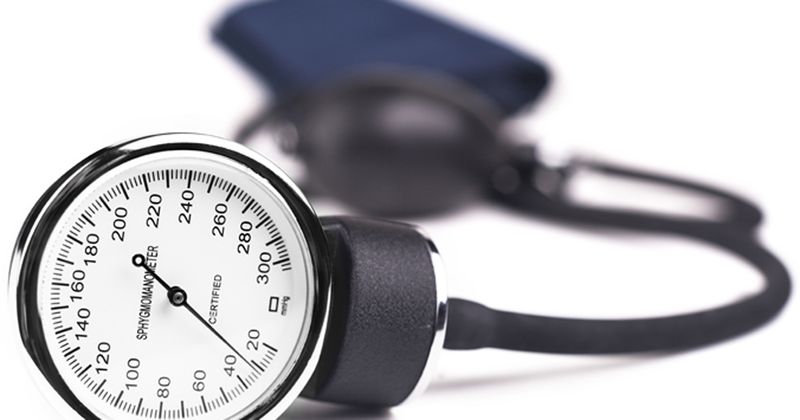Unhealthy lifestyle drives high blood pressure in children, teens
Lifestyle modification, including increased physical activity and a healthy diet, is the “most important step” in the management of cardiometabolic risk factors driving hypertension in children and teens, according to a consensus statement.
The new consensus statement focusing on hypertension in children aged 6 to 16 years, published in European Heart Journal, notes that inactivity, diets high in sugar and sodium, and excess weight account for nine in 10 cases of hypertension in children and adolescents.

“Parents are significant agents of change in the promotion of children’s health behaviors,” Giovanni de Simone, MD, FACC, FAHA, FESC, senior professor of medicine at the University of Naples Federico II in Italy, said in a press release. “Very often, high blood pressure and/or obesity coexist in the same family. But even when this is not the case, it is desirable that lifestyle modifications involve all family members.”
Reconcile hypertension definitions
Identifying arterial hypertension in children and adolescents is “challenging” because standards and definitions are complex during body growth and CV outcome studies cannot be designed, de Simone and colleagues wrote. Current guidelines propose three different definitions. The European Society of Hypertension proposes a BP of at least 140/90 mm Hg for children younger than 16 years in the 95th percentile of age-sex-height nomograms. The American Academy of Pediatrics (AAP) proposes a BP of at least 130/80 mm Hg for children younger than 13 years in the 95th percentile of age-sex-height nomograms for children with normal weight only. The Hypertension Canada Guidelines Committee proposes a BP of at least 120/80 mm Hg for children younger than 12 years and at least 130/85 mm Hg for children aged 12 years and older.
“In addition to the differences in hypertension definition, the 2017 AAP guidelines excluded youths with overweight/obesity from normative tables,” the researchers wrote. “Due to these different indications, European Society of Cardiology associations and councils, together with the affiliated Association for European Paediatric and Congenital Cardiology, produce this document to try to reconcile these different views, also suggesting measures to be undertaken in the near future to better clarify discordant points.”
The researchers wrote that hypertension should be defined according to the modified AAP tables up to age 16 years, while noting that “clearly, Europe needs specific normative standards to be as accurate as possible.” For adolescents aged 16 years or older, the BP value of 130/85 mm Hg is sufficient to diagnose hypertension.
Use lifestyle management first
The researchers noted that hypertension in children should be primarily managed by improving adherence to a healthy lifestyle, including physical activity (at least 60 minutes per day), a tailored diet with limited sodium intake, encouraging parent participation, providing educational support and materials, establishing realistic goals and a health-promoting reward system.
“Parents should monitor the amount of time their children spend watching TV or using smartphones and suggest active alternatives,” de Simone said in the release.
When moving to pharmacologic treatment, choose agents approved for use in children, the statement noted.
“The benefits and likelihood of response are important in choosing a specific medication. However, it is equally crucial [to] consider potential adverse effects prior [to] the initiation of selected antihypertensive therapy,” the researchers wrote.
Close ‘knowledge gap,’ increase awareness
The consensus statement authors outlined several “needed actions” to reduce a knowledge gap on hypertension in children and adolescents, including developing appropriate multiethnic European normative tables for in-office BP, ambulatory BP monitoring and home BP measurements through the organization of longitudinal registries, with the prospective to link with adult CV risk. Additionally, researchers suggested randomized clinical trials use surrogate endpoints to document the specific benefits and disadvantages of BP-lowering agents and behavioral lifestyle strategies in this age group.
“The consensus panel strongly encourages the implementation of international worldwide initiative to generate normative tables for children and adolescents from all continents, to have general rules on identification of arterial hypertension in this range of age,” the researchers wrote.
Researchers also noted that the prevention and management of hypertension in children and adolescents must receive greater prominence in the public health agenda through the lay press, in social media campaigns or through integration in large-scale public health campaigns.
The authors also called for a guarantee for “protected time for children on TV and social media” that would not include any promotion of junk food or potentially deleterious lifestyle habits.
The European Society of Cardiology Council on Hypertension, the European Association of Preventive Cardiology, the European Association of Cardiovascular Imaging, the Association of Cardiovascular Nursing & Allied Professions, the ESC Council for Cardiology Practice and Association for European Paediatric and Congenital Cardiology jointly prepared and endorsed the consensus statement.
